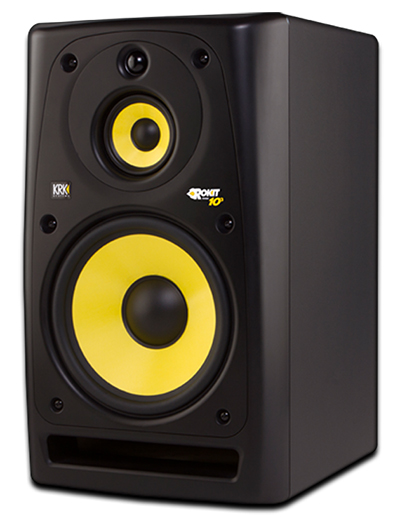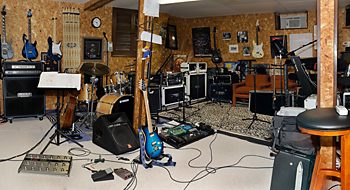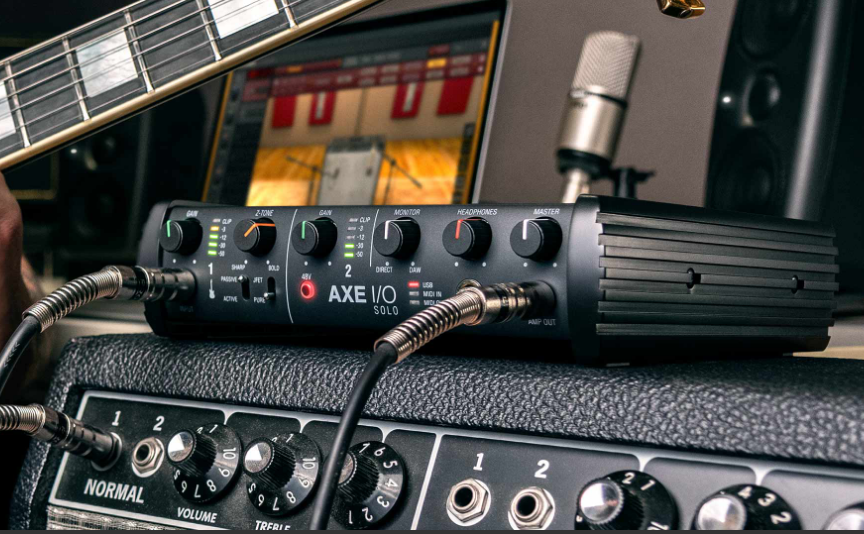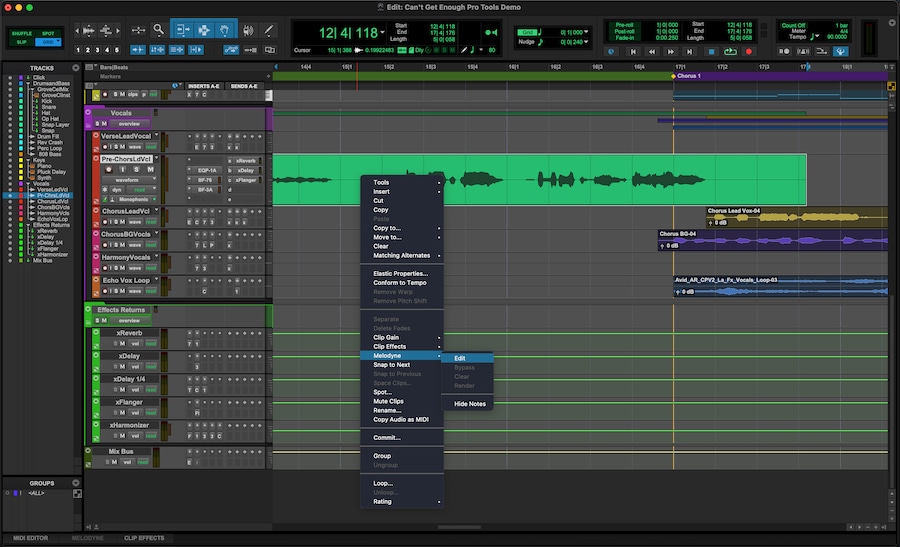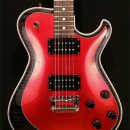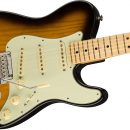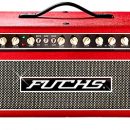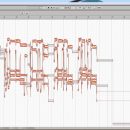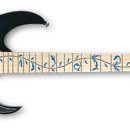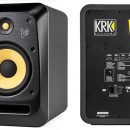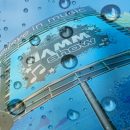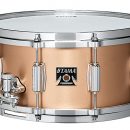Years ago, we were impressed by the PreSonus TubePre, so much so that we purchased the two-channel version—the first-generation BlueTube—for use in one of our studios. It offered an unprecedented value in terms of sound quality and flexibility for the price.
The BlueTube DP (dual path) preamp combines both solid-state and tube circuitry in each of its two channels, enabling you to dial in some tube warmth or subtle overdrive as needed. Because of its compact size, it’s useful for more than just typical duty with a microphone. Go ahead and stick it in-line between a guitar/bass preamp and stereo power amp to add a little bit of tube warmth to the sound, for example.
| Category | Value | Rating |
| Features | 20% | |
| Usability | 25% | |
| Sound | 25% | |
| Documentation & Support | 10% | |
| Price | 20% | |
| OVERALL RATING = 3.4 3.6 stars or better: Outstanding, WIHO Award 3 stars or better: Worth considering 2 stars or better: Suited to specific needs 1 star or less: Not recommended |
||
Fast forward a few years since the first-generation preamps. PreSonus has been building preamps utilizing its widely praised, XMAX, Class A, solid-state preamp circuitry. It was inevitable, then, that the BlueTube would acquire some upgraded circuitry, and the BlueTube DP v2 offers a nearly identical package as the original, only better sounding! Everything you loved about the original BlueTube DP (or TubePre) is here, only the solid-state preamp section has been significantly upgraded to an XMAX preamp and the faceplate sports a cool blue color scheme.
Although it lacks digital i/o or variable input impedance, there’s no better value if you want to add a pair of extremely useful and clean sounding preamp channels to your project studio or instrument/amp rig. It also makes a great direct box for live use.
Features
The BlueTube DP v2 is a two-channel preamp featuring a pair of class A XMAX preamp circuits as well as a pair of 12AX7 preamp tubes that can be bypassed or dialed in to taste on each channel as needed.
Each channel has identical, fully independent controls: 48V phantom power, 180 degrees polarity inversion, a -20 dB pad, an 80 Hz high-pass filter, Gain, and Tube Drive. A pair of analog VU meters are a nice touch, and useful. For those more digitally inclined, each channel also has a clipping LED next to the Gain control that illuminates when the signal exceeds +20 dBu. There is no stereo link feature.
 The rear of the unit features combination Neutrik ¼”/XLR inputs for microphones or instruments, and independent ¼” and XLR outputs, which may be used simultaneously if desired. The inputs are fixed at 1.3K Ohm impedance (XLR) and 1M Ohm for the ¼” input. The signal-to-noise ratio is greater than 95 dB, and THD is less than .005% for the XMAX preamp. The tube stage adds from .01% to 30% THD, but then, that’s the whole point of the tube stage.
The rear of the unit features combination Neutrik ¼”/XLR inputs for microphones or instruments, and independent ¼” and XLR outputs, which may be used simultaneously if desired. The inputs are fixed at 1.3K Ohm impedance (XLR) and 1M Ohm for the ¼” input. The signal-to-noise ratio is greater than 95 dB, and THD is less than .005% for the XMAX preamp. The tube stage adds from .01% to 30% THD, but then, that’s the whole point of the tube stage.
The BlueTube DP v2 has up to 115 dB of dynamic range on the XMAX preamps, and 107 dB with the tube stage. Frequency response is 20 Hz — 20 kHz.
The power supply is an in-line wall-wart type, but it’s super-compact and extremely light in weight. You could easily Velcro it to the back of your rack if used in an amp rig, and at only 12 VDC/1 amp, you probably drive it from a pedalboard power supply. In addition to its tone sweetening capabilities, the BlueTube DP v2 is also quite handy when used as a direct box for a keyboard rig.
If you love experimenting with different sounding tubes, it’s easy to open the case and swap out the tubes since preamp tubes do not require re-biassing.
Usability
The BlueTube DP v2 was a breeze to use. We had it up and running in the studio in just a matter of minutes without any need to look at the instruction manual, and we could easily dial in the tube stage and utilize its features as needed. We tested with both condenser and dynamic mics on vocals and ran instrument sources straight into the preamp as well.
 The BlueTube DP v2 also proved useful as a direct box for a keyboard rig. Because both outputs may be used simultaneously, we were able to run the ¼” outputs to our monitoring setup and the XLR outputs to the front-of-house. A screw hole on the bottom of the unit enabled us to easily screw it onto a universal rack shelf for secure transport, though Velcro would have worked just as well. Although it’s just 1U tall, you can’t fit a pair side-by-side in a rack, and there are no available rack ears.
The BlueTube DP v2 also proved useful as a direct box for a keyboard rig. Because both outputs may be used simultaneously, we were able to run the ¼” outputs to our monitoring setup and the XLR outputs to the front-of-house. A screw hole on the bottom of the unit enabled us to easily screw it onto a universal rack shelf for secure transport, though Velcro would have worked just as well. Although it’s just 1U tall, you can’t fit a pair side-by-side in a rack, and there are no available rack ears.
The extremely generous 80 dB of gain made it easy to mic sources both loud and soft.
Sound
We tested the BlueTube DP v2 in a variety of settings from recording to live, and the results were consistently solid. PreSonus did a great job of taking an already good sounding budget preamp and making it sound even better.
XMAX preamps are very neutral sounding, which is great when you don’t have the luxury of a studio full of preamps with unique “colors” for different audio sources. The BlueTube DP v2 sounded good with everything from drums to guitars to keyboards to vocals.
Clean is the next best adjective to describe this preamp’s sound (after neutral). The XMAX preamp didn’t color our audio sources one way or the other, just giving us precisely what we put in, which is a good thing if this will be your primary preamp for all things recorded. It was extremely quiet, too—and in this regard, the BlueTube v2 compares quite favorably with preamps costing more than five times its price, and it never introduced unwanted noise in our signal path unless we purposely pushed the Tube Drive control.
In general, adding the tube circuit to a variety of input sources (guitar, keyboards, vocals) yielded nearly as much transparency as the XMAX circuit alone. Most times, with the Tube Drive control below 12:00, listeners didn’t really detect a difference in the sound of our source material either with or without the 12ax7 tube in the circuit, though it did impart a very subtle warmth (and we really do mean very subtle).
Pushing the Tube Drive control past 12:00 and up to its maximum introduced light clipping to slight fuzz in our tone. Most useful with guitar and bass sources, dialing in a sound in the 12:00 – 3:00 range created an effect that sounded more like speaker cone breakup, great if you’re trying to add that subtle hint of breakup to a clean guitar track. When pushed to its max, though, the fizzy sounding distortion wasn’t particularly exciting, and shouldn’t be thought of as a substitute for a nice guitar overdrive pedal. Again, subtlety was key here.
The 80 Hz roll-off easily took the boominess out of bass-heavy instruments and baritone vocals, and the phase switches made it easy to dual mic speaker cabinets.
A word of caution for best results when patching into your studio. Tip: if you’re placing the TubePre v2 in front of preamps in your recording interface that can’t be bypassed, use the XLR outputs for lower noise and carefully manage your gain levels. Our recording interface, the WIHO award-winning PreSonus StudioLive 24.4.2 mixing board, has bypassable preamps, so we connected the BlueTube DP v2’s outputs via XLR-to-TRS balanced cables for best results (and accurate test monitoring).
Documentation and Product Support
Despite not really needing to read the instruction manual, PreSonus always does a good job with documentation, and this manual was very straightforward. It clearly explained all uses for the BlueTube DP v2, as well as providing detailed specs such as how to change out the preamp tubes. In a world where manufacturers are constantly warning not to open up their products, tube swapping information was a notable and welcome addition since some of us are bound to try swapping out the tubes, even if they don’t really need replacement.
Price
The BlueTube DP v2 (MSRP $279.95) sells for $230. If you’re just using the preamps built into your iMac for recording in GarageBand or using a cheap multi-track recorder, this is very little money to spend that will make a noticeable difference in your audio recording quality. And if you have use for a stereo DI that you can stick on a rack shelf, you can’t go wrong, either.
Contact Information
PreSonus
www.presonus.com
| Evaluation Short-List |
|



